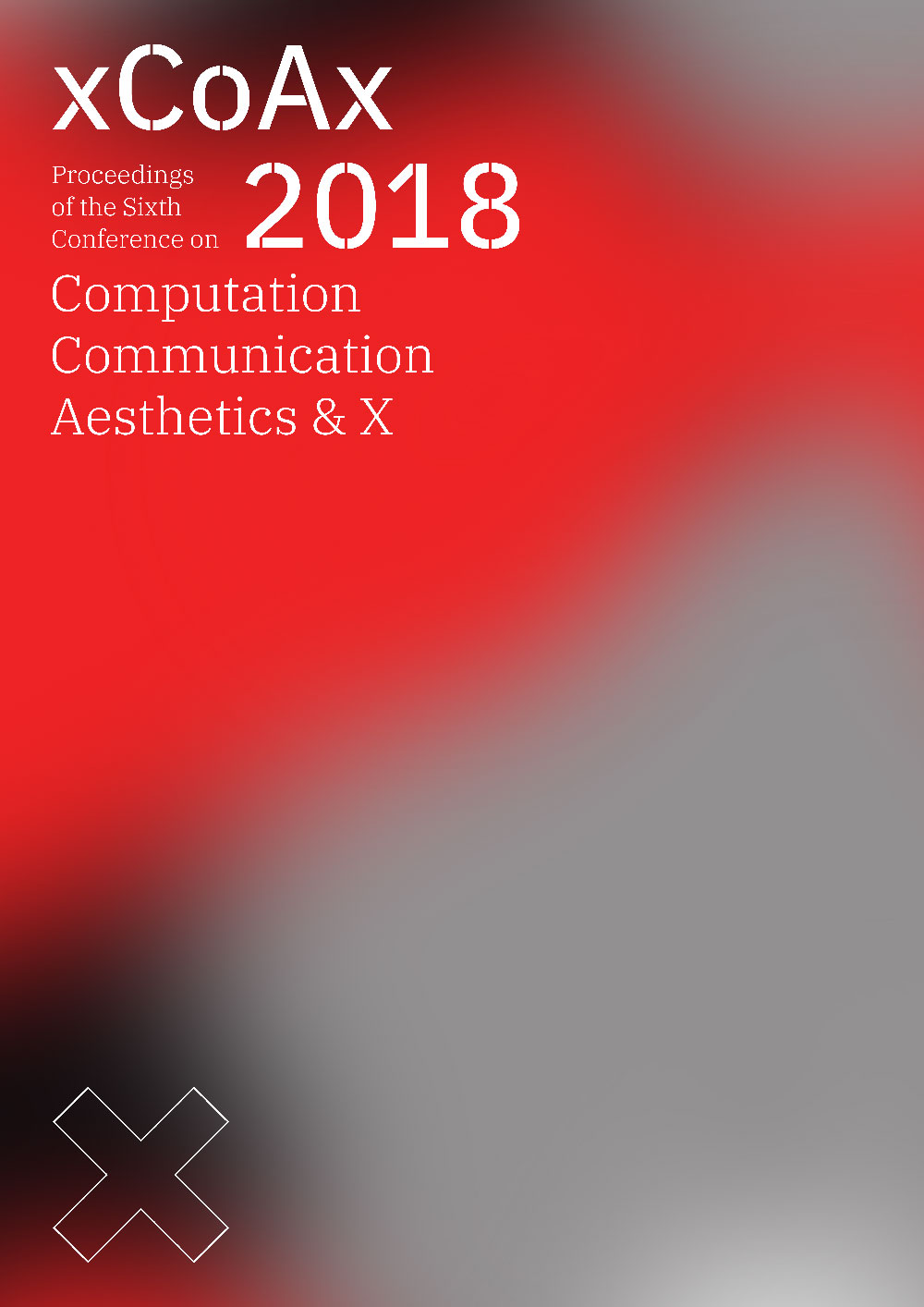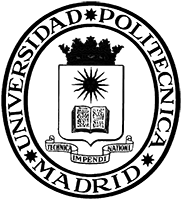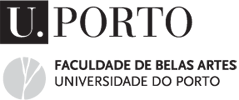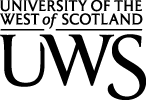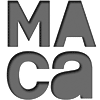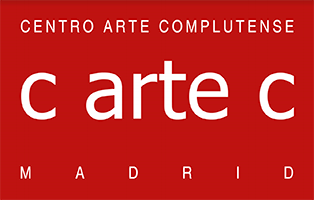6th Conference on Computation, Communication, Aesthetics & X
12–13 July Madrid, Spain
Proceedings
xCoAx 2018: Proceedings of the Sixth Conference on Computation, Communication, Aesthetics and X.
Edited by André Rangel, Luísa Ribas, Mario Verdicchio, & Miguel Carvalhais.
ISBN: 978-989-746-171-2
267 pages
Special Issue
Special Issue of the Journal of Science and Technology of the Arts
CITAR Journal, Volume 10, No. 3 – Special Issue: xCoAx 2018
Includes works by Graziele Lautenschlaeger, Frieder Nake, Alessandro Ludovico, Marta Flisykowska, Rodrigo Hernández-Ramírez, and Pedro Costa.
ISSN: 1646-9798 e-ISSN: 2183-0088
Open access at artes.ucp.pt/citarj
The xCoAx 2018 photo album is now online
ConferenceProgram
| Wednesday, July 11 | |
|---|---|
| 14:30 ETSAM Aula 0S1 | Doctoral Symposium Chaired by Frieder Nake & Mario Klingemann
|
| 17:30 C ARTE C Museo del Traje | Exhibition Opening, Opening Cocktail
|
| Thursday, July 12 | |
|---|---|
| 9:30 ETSAM | Registration and Accreditation |
| 10:30 ETSAM Sala de Actos | Paper Session 1
|
| 11:30 | Coffee Break |
| 12:00 ETSAM Sala de Actos | Paper Session 2
|
| 13:00 | Free Time for Lunch |
| 15:00 ETSAM Sala de Actos | Paper Session 3
|
| 15:40 | Break |
| 15:50 ETSAM Sala de Actos | Paper Session 4
|
| 17:00 | Coffee Break |
| 17:30 ETSAM Sala de Actos | Keynote
|
| 18:30 | Free Time |
| 21:00 ETSAM Aula Museo | Performances
|
| Friday, July 13 | |
|---|---|
| 10:30 ETSAM Sala de Actos | Artwork Session 1
|
| 11:15 | Coffee Break |
| 11:45 ETSAM Sala de Actos | Artwork Session 2
|
| 13:00 | Free Time for Lunch |
| 15:00 ETSAM Sala de Actos | Artwork Session 3
|
| 16:15 | Coffee Break |
| 16:45 ETSAM Sala de Actos | Performance Presentations
|
| 18:00 | Break |
| 18:15 ETSAM Sala de Actos | Keynote
|
| 19:30 | Break |
| 22:00 El 26 | Conference Dinner |
Keynotes

Mario Klingemann Instruments of Creation
The ability to wield tools is one of the core qualities that define humanity. The evolution of human culture has always run parallel to the evolution of the tools and instruments at our disposal. Machine learning and what is commonly known as artificial intelligence is a very recent instrument that we have created and we are starting to apply it to all possible areas, including the creation of art. As with any instrument it takes time to learn how to use it skillfully or how play it masterfully. Mario Klingemann has been experimenting with the possibilities to create visual art with artificial neural networks for several years and is beginning to understand the potential and limitations of these instruments. In his talk he will give insights into his process and show some of the latest developments in this fast-moving field.
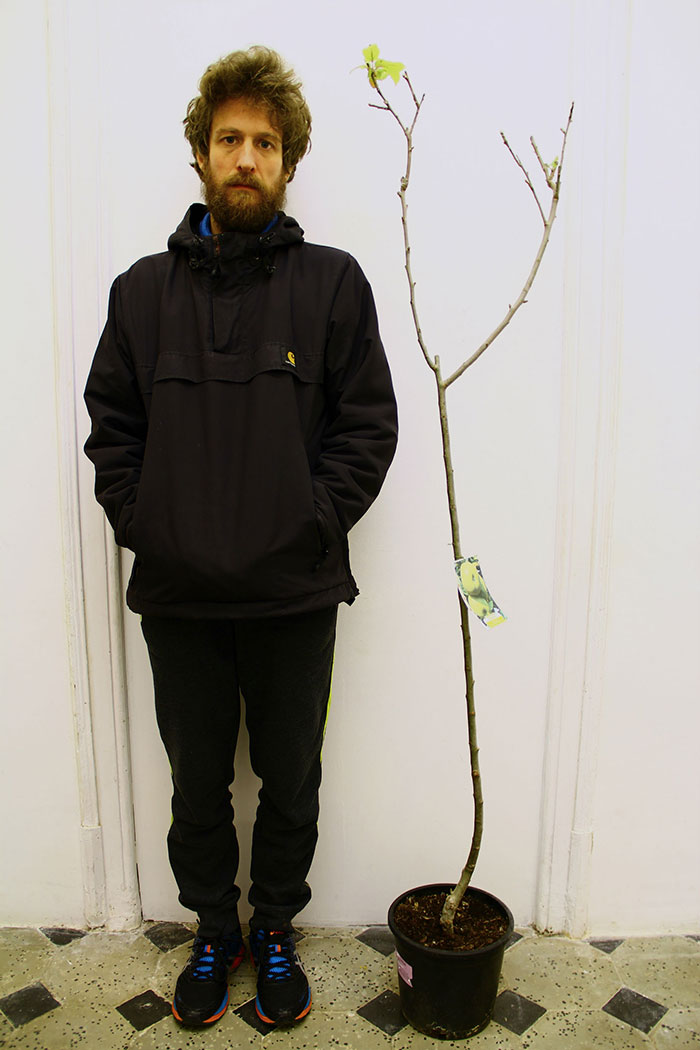
Pep Vidal Constantly Variable
I was attending my first Calculus class and the teacher tried to explain us how one can manage to “feel” that between 0 and 1 there are infinite numbers. He drew a line on the blackboard and wrote respectively 0 and 1 at its two extremes. He said: “So, we have this line and the extremes are representing 0 and 1, all right. What if I move closer to the blackboard and focus on the initial part of the line?” The teacher did go closer, put his nose ON the blackboard and in that position he continued talking: “Well now I’m only seeing a small part of this line, let’s say that it is the part between 0 and 0.1.” So he changed the 1 at the right extreme by 0.1, leaving the line exactly as it is, same position and length. “Ok, now the extremes are representing 0 and 0.1. What if I move again closer to the blackboard and focus on the initial part of the line?” You can guess what happened next: he changed the 0.1 at the right extreme by 0.01, same line, same length. He repeated the example as many times he needed in order to get his nose completely white with chalk.
This example is telling us that everything is relative, it’s about how “close” you are to the blackboard, having infinite numbers to choose.
0 ——————– 1
0 ——————– 0.1
0 ——————– 0.01
0 ——————– 0.001
0 ——————– 0.0001
0 ——————– 0.00001
0 ——————– 0.000001
Papers
Graziele Lautenschlaeger From Light to Sound: Mediumsprünge and Absence as Creative Matter
The paper analyses media devices and artworks based on light-to-sound translations through the articulation of Vilém Flusser’s media theory namely considering the zero-dimensionality of electronic and digital media and the concept of Mediumsprünge. By focusing on the role of absence as creative matter, the discussed examples were selected from references and methodological tools used in a cross-disciplinary practice-based PhD research on photosensitive materials and devices conducted between 2014 and 2018. The reflection turns explicit multiple dimensions of the notion of absence within creative processes in Media Art, analyzed as experiences of translation of materialities.
Frieder Nake Machines, Programs, and Beauty. A Human-Centered Contemplation
The greatest cultural revolution of our times is the Algorithmic Revolution. It replaces all infrastructures by algorithmic, i.e. computable operations, objects, and processes. Machines and programs seem to be capable of performing, at high levels, operations, decisions, and processes that, until recently, were considered to be exclusively human. Growing numbers of human beings believe machines were learning, detecting patterns, deciding more considerately than hu¬mans. They trust machines more than themselves in issues of intellectual and artistic creativity. From a human-centred view of the world, it is, however, fact that computers are superior in relentless repetition of micro operations, whereas humans remain superior in macro recognition of patterns. To study some aspects of this general claim, the paper takes a look at Sol LeWitt’s famous statement about the idea and the machine. It asks in which sense aesthetics (to avoid “beauty”) may become subject matter of computation. And it characterizes two cases of generative art, one from 1966, the other one from 50 years later. Its focus is on how strong algorithmics may be in generative art, and how totally human-made all decisions remain. The argument is in the form of case study, not logical derivation.
Rodrigo Hernández-Ramírez Design Thinking, Bullshit, and What Thinking About Design Could do About It
Design thinking has been heavily promoted as a powerful tool for human-centred innovation and as a versatile problem-solving method for any issue involving sociotechnical systems. Recently, however, some critical voices within design and science & technology studies have called bullshit on the soundness of such claims, accusing design thinking of essentially trivialising design methods to serve purely commercial goals. Through an analysis of the recent history of design research and an overview of some (philosophical) accounts on the concept of “bullshit”, this paper aims to clarify whether there are sufficient reasons to dismiss and belittle design thinking in such terms. Designers, educators, and anyone concerned with how obfuscatory and vacuous discourse threatens deep reflection on design perhaps will be interested in this account.
Martin Kaltenbrunner & Enrique Tomás Schallmauer: Composing Tactile Sound for the Solid Medium
In this article we describe the Schallmauer, a site-specific interactive sound installation at the new Musiktheater opera house in Linz, Austria. This installation explores the tactile qualities of musical composition and interactive sound, while invisibly integrating into the existing architecture of the building. The installation reacts to the presence of the bypassing audience, intending to attract their attention and motivating further explorative interaction. Through a series of interactive infrasound compositions, it emphasizes the experience of sound within the solid medium of a wooden wall and beyond, which expands the predominant auditory and visual impressions of an Opera House by directing the focus to the listening through the body. Apart from the conceptual and technical background of this project, we also present some relevant related artworks in the area of tactile sound interaction and composition.
José Lima The Gatorra: A Technologically Disobedient Instrument for Protest Music
The present paper is an introduction to the Gatorra, an electronic experimental instrument developed in southern Brazil by builder and musical artist Tony da Gatorra. The author presents some of the findings from original research on its circuit design and its origins, in relation to similar designs of electronic circuitry made popular in hobbyist and DIY magazines. References are also discussed to establish a theoretical framework to be used as a basis of an analysis of this production in further works, using Reed Ghazala’s notion of Threshold of invention as a starting point.
Sérgio Rebelo, Carlos M. Fonseca, João Bicker & Penousal Machado Evolutionary Experiments in the Development of Typographical Posters
During the nineteenth-century, the poster, driven by technological advancements, becomes the primary Graphic Design’s medium for mass communication. However, these posters were not evolved by a graphic designer (in the current sense of profession), but by joint work between the printer and the client. Based on this production method, we present an evolutionary system to generate poster designs from a given text input. To assign the individuals’ fitness we resort to a semi-autonomous scheme set by hardwired and user-guided measures. Three main aesthetics measures define the scheme: (1) Composition; (2) Design; and (3): Client satisfaction. In this paper, we will describe the system, and discuss its ability to interactively evolve the poster designs. We will also analyse the outcomes of the system in the development of typographic poster designs using a typographic superfamily, and the impact of the user criteria in the results.
Caterina Antonopoulou Interacting with (hi)stories, through a New Media Art Project
This paper presents a new media art project for interactive visualization of archival material. The interactive interface allows the establishment of new associations between phygital (physical/digital) elements and the articulation of plural narratives, through tangible and embodied interaction. It introduces the interactive installation and performance Memory Containers, where digital footage and physical objects merge into an augmented interactive space. Visuals are mapped on found objects and follow their movement, through a custom opensource real-time projection-mapping software. Thus, the users can rearrange the objects and build physical structures, while they create new links between the digital images. The project was a result of the collaboration between interdisciplinary artists and local community agents. The paper describes the D.I.W.O. (Do It With Others) practices applied, and the technical solutions adopted. It also discusses the ways that interactive visualizations of archives provide opportunities for broader access to archival material, forging a revisiting, reappropriation, and reframing of (hi)stories.
Alessandro Ludovico History of the Infinite Publication
The aim to increase the space for content in publications has been part of the more general and natural need to overcome the limits of a fixed space. But the need to overcome the size limits in publications can be formulated as a technological question as the printed format easily reaches its limits when it becomes either unreadable, with the content excessively reduced in scale, or unmanageable, with the content exceeding a certain threshold in binding or physical presence. Historically the first approach to increase this space has been manifested through the progressive mechanically-induced collapse of content in the given space. Before that the amount of readable space had to be established in advance, being either a page or a certain amount of openness of a scroll, and the content would just be able to fill it under certain ratio rules.
Isabel Clara Neves The Emergence of Computational Design Research and Education: A Technical-Scientific Approach, 1950-1970
A convenient framework of computational Design Research and Education history in architecture is fundamental to formulate the possibilities of a “digital continuity” or “revolution in the discipline” (Oxman 2006). Contributing to this framework, this article presents an analysis of the cultural and technological context that led to the emergence of Computational Research and Design Education – HfG-Ulm and its american counterpoint - focusing specifically on the way teaching and architecture design approached science in the period 1950-1970. This is based in educational programs and places where a remarkable set of teachers, ideas and work converged.
Pedro Costa & Luísa Ribas Conversations with Eliza: on Gender and Artificial Intelligence
This paper aims to explore the relationship between gender and artificial intelligence. It begins by addressing AI and the possibilities and questions that emerge with its evolution and integration in daily life. It then examines gender in light of a binary framework, in order to understand its role in social, cultural and work related contexts. These topics are then related, seeking to understand how and why chatbots and digital assistants such as Siri, Alexa or Cortana tend to display feminine attributes. Complementing this discussion, the project Conversations with ELIZA is presented as an exploration of femininity in AI through the development of four chatbots integrated into a web-based platform. Each of these bots performs specific tasks that seem to highlight particular gender stereotypes or even reflect common assumptions about femininity back to its user. In this manner, this study aims to question whether artificial intelligence tends to reinforce traditional and normative notions of gender and femininity.
Gordan Kreković, Antonio Pošćić & Stefan Manojlović Chatbots as a Novel Interactive Medium for Poetry
As emerging infrastructural entities that enable human-computer conversation, chatbots open a plethora of possibilities in mediation of poetic content. The aim of this paper is to systematically explore various implications that arise from the conceptual role and technical possibilities of chatbots. Their conversational nature is a key differentiator in an assembly of existing media spaces that enables phenomena such as dynamism, non-linearity, and inverse intentions, while also modifies the roles of medium, artist, and user.
Marta Flisykowska Who nose
This is a speculative project regarding anthropology, plastic surgery and biomimetics using 3D print technology as well as state of the art regarding cosmonautics. It is a visual interpretation of research regarding the impact of climate conditions on the shape of noses, conditions occurring on Mars and threats for our health relating the fact of reaching the Red Planet and staying in difficult environments, based on the 3D print technology.
Artworks
Andrés Villa Torres Critical Mass
The work explores behaviours of digital crowds and the limits of self exposure, social participation, surveillance, data ethics and sharing culture in online platforms. The installation connects the exhibition space with an existing random live chat community. The information is retrieved in real time from the platform and from the real space building a mosaic-constellation with the most recent data.
Angela Ferraiolo Maps of a Future War (Flight & An Account from Citizen X)
Maps of a Future War continues my research in narrative aesthetics and stories that might act as systems. The maps are evolutionary environments whose narrative agents draw from a fictional archive of statements, a written text, meant to represent observations, beliefs, and actions arranged across a range of narrative states. Using a framework of regions, signals, boundaries, text agents drift and collide in an attempt to produce an emergent narrative. The two maps shown here are Map #3: Flight, which tells the story of movement across regions of conflict, and Map # 9: An Account from Citizen X, which narrates the inner state of a citizen during a moment of political crisis.
Arne Eigenfeldt & Jim Bizzocchi Ambient Landscapes
Ambient Landscapes is a meditation on our natural environment, inviting viewers to savor the passing of time over the course of the year. The system produces sequences of video joined by slow visual transitions and enriched through their interaction with music and soundscape. The computational processes of three independent systems continuously generate an ongoing and varied audio-visual output.
Beverley Hood We Began as Part of the Body
An installation of creative research artworks, including sound piece, 3D printed skins and 360 photographic images, developed during a residency, at the Brown Lab, an eczema genetic research facility, at the University of Dundee. The work attempts to immerse the viewer in the scientific and emotive issues raised, around the use of human tissue for genetic research.
Beverley Hood & Tom Flint Eidolon 360 – A VR Experience (demo)
Eidolon360 is a virtual reality film experience, set within a medical simulation centre, that recounts the origin-story of medical simulation, an intriguing tale of a mysterious drowned woman found in Paris in the late 1880s. The film attempts to present an emotionally resonant anecdote as an immersive experience, scrutinizing the overlaps between real life and simulation.
Birk Schmithüsen Speculative Artificial Intelligence
The aesthetic experiment investigates the question of the nature of artificial intelligence in neural networks. They are ascribed with intelligent behavior because they can generalize learned rules and apply them to unknown data. The artist Birk Schmithüsen describes the networks associations as predictable unpredictability. In the experiment, the training process of an artificial neural network and its predictions are audiovisually translated and thus intuitively experienced. A spherical object serves as a volumetric display to make the sound-image associations visible.
Catarina Lee Previous–Next
Previous-Next explores the topics of the xCoAx conference discourse through an audio-visual installation that translates the text of the papers into graphics and sound modulations. The aim is to explore the potential of software to translate digital textual data into new expressive forms, and eventually propose new perceptions from it.
Elias Naphausen Performers: Lucilia Sericata
Flies in a frame are being tracked with a camera system. A software analyzes the position of each fly and connects the positions with lines. The resulting image is projected. If the flies are moving inside the frame, the lines are moving corresponding to the position of the flies. The projected lines sometimes form three-dimensional objects, flat line patterns or flickering chaos, depending of the activity of the flies.
Federico Guardabrazo Vallejo Prima Materia
Technology on its own has the power to define social contracts that we often assume blindly. The work shows a computer generated marble-like texture that when watched closely transforms guided by the real-time price of the components of coltan, key in the manufacture of electronic components and whose extraction and trade is a source of global conflicts.
Graziele Lautenschlaeger Self-Portrait of an Absence
Self-Portrait of an Absence (2016) is a participative performance based on the partial visual impairment of the artist, who has a blind eye. Technically the artwork consists of an eye-tracking system programmed to generate and process sounds according to the data collected from the asynchronous movements of both eyes. The artist suggests to passers-by in public or semi-public spaces an observing-listening aesthetic experience under her umbrella, where hang the loudspeakers.
Hanns Holger Rutz & David Pirrò Körper
The work explores the relationship between corporeality and the algorithmic, realised as an environmentally aware, sensitive installation combining the modalities of sound and moving image. Despite the absence of locomotion, there are perhaps complementary ways an electric body could renegotiate, with whomever it encounters, its shape and presence.
Jing Zhou Through the Aleph
Through the Aleph is a net art project offering an unprecedented experience where many places on Earth and in space can be seen simultaneously in an instant. With an unexpected approach to surveillance cameras and global networks, it visualizes the diversity of human civilizations (microcosm) and the unity of humanity without borders in the ever-changing universe (macrocosm).
Leticia Ferreira de Souza & Murilo Paiva Homsi Streams From the Past
Streams from the Past offers a critical look in live streaming technologies and the supposed authenticity of real time performances in such platforms. The piece creates an interactive and poetic space which invites visitors to face their own performances in different layers of past, encouraging contemplation and reflection.
Marta Flisykowska Who nose
This is a speculative project regarding anthropology, plastic surgery and biomimetics using 3D print technology as well as state of the art regarding cosmonautics. It is a visual interpretation of research regarding the impact of climate conditions on the shape of noses, conditions occurring on Mars and threats for our health relating the fact of reaching the Red Planet and staying in difficult environments, based on the 3D print technology.
Marta Hryc Vanishing
Every object reflects the interests of a culture. The culture is overburdened with visual content, this content may be a medium for further work. Project Vanishing is an attempt to show the nuances of digitally influenced stylistics of classic jewellery objects using a technology of 3D printing in pearl powder.
Paul Hertz Fools Paradise II
Fool’s Paradise is a virtual world based on the ""Proverbs of Hell"" of English poet and artist William Blake. Intermedia data structures inform its visual and musical composition, developed in collaboration between artist Paul Hertz and composer Stephen Dembski. Masks were created by Mark Klink and calligraphy by Koy Suntichotinun.
Pedro Costa Conversations with Eliza
This project seeks to explore artificial intelligence and how it portrays the female gender, by developing different chatbots inspired by everyday AIs, like Siri or Alexa and assigning them particular female archetypes. Conversations with ELIZA focuses on how these digital assistants reinforce traditional gender roles and, potentially, accentuate cultural stereotypes, questioning the predominance of the female gender in artificial intelligence.
Peter Williams Grasping Elapsing 3.6
Grasping Elapsing 3.6 is a hybrid, digitally-augmented participatory performance of thirty minutes and an indefinitely-extended digital component which is conducted online. The piece uses custom software, live scanning, archiving, databanking, spoken-word, text, image processing, social media components, participant contributions and conversation to combine varied temporal, spatial, locational, and situational moments through the use of digital practices and face-to-face discussion.
Sara Orsi Whole Web Catalog: Mash-up Tools
Whole Web Catalog is an ongoing web search engine that explores the space between a sharing global community and a whole system control. Connected to various information services and datasets through open APIs, it works as a mash up tool to already existing tools, that returns an assemblage of information in order to get non-unilateral responses.
Sérgio Rebelo, Carlos M. Fonseca, João Bicker & Penousal Machado Evolutionary Experiments in the Development of Typographical Posters
Based on the Victorian poster production method, we developed an evolutionary system that generates typographical posters. Outcomes are evaluated in a semi-autonomous way, allowing the user to guide the process according to his/her preferences. In this artwork, we present example outcomes of the system and its generating process using a typographic superfamily.
Tatsuo Unemi & Daniel Bisig Browsing the Biographies in an Evolutionary Artificial Society
This is an audio visual installation utilizing an individual-based evolutionary ecological (or social) simulator of humans' lives. The visitors can watch, listen to, and browse the life events happened in the computer, such as birth, falling in love, proposing, making a child, separation, and death.
Walter Langelaar SAM (Semantic Analysis Machine)
Sam:the Virtual Politician is contextualised as an attempt to close the gap between voters and the political system, while raising awareness around contemporary digitally networked tools such as AI and Machine Learning in relation to data privacy and information security concerns, as well as contemporary issues around large scale invasive data analytics and the influencing of public opinion through social media. Sam combines pre-processed data with the inference of public policy opinions into its unique cognitive architecture, and communicating in natural language to anyone that wants to have a conversation about politics.
Xtine Burrough & Letícia Ferreira The Radium Girls: A Radically Advancing Tour of Exit Signs
This self-guided tour juxtaposes stories about technology used to produce glowing exit signs with the story of the Radium Girls, who were female factory workers of the 1920-30s. The cages present captured voices to suggest the Radium Girls were like “canaries in the coal mines” of U.S. labor regulations.
Performances
Vitor Joaquim The Unthinkable of Nothingness
The Unthinkable of Nothingness is a performance proposal focused on the experience of listening following the principles of acousmatic as it was conceived by the Greek philosopher Pythagoras who proposed the abolition of his own visual appearance, using a veil while he was teaching to his students. He argued that by the implementation of this process, the concentration on the message would be much stronger and deeper. Following this principle, this third iteration of the piece seeks for promote the fruition of music content in a black box context, deprived of light.
Gintas Kraptavičius Vintage Digital
Live electroacoustic performance. The patch was built in Plogue Bidule 0.97 software with VST plugins assigned and controlled by MIDI keyboard and controller. All parameters are controlled live during a concert.
Joel Diegert & Adrian Artacho Aubiome
Aubiome for saxophone and live electronics is the result of a five-year doctoral research project aiming to investigate the possibilities of extending the saxophone by use of live electronics processing. This research is based on the proposition that a performer-based system of live electronics would look and sound distinctly different from what a composer would design on his own. This premise lead us to reconsider the traditional roles of performer and composer, ultimately leading to a different approach to collaboration, which we termed “performer-centric”. Aubiome is meant to serve as a “proof of concept” for this type of collaboration, and we hope it might inspire other performer/composer teams to further explore the integration of acoustic instruments with computer-based audio processing.
Stephen Roddy Signal to Noise Loops i++
Signal to Noise Loops i++ is a live performance for the PerformIOT system. This system involves the application of techniques and concepts from the field of data-driven music to achieve a balanced co-ordination between algorithmic composition, live looping and improvisation in the context of live electronic music performance. The performance utilises Smart City IoT data drawn from sensors placed around Dublin City. From January to May of 2018 Ireland experienced a number of unusually strange weather events. Devices monitoring ambient noise levels, water levels and air quality measured the effects of these events on the city. While each of these streams of data represents an independent set of measurements for unique phenomena, they nonetheless share a commonly interrelated structure as they have been shaped by the recent history of strange weather events. This make them useful for coordinating and balancing our live performance system because while they share similar characteristics and trajectories there is also enough variance between the different data streams to prevent the system from sounding too static and homogenous.
Jeffrey Morris The Persistence of Elusion: Hard and Soft Dances
This improvised performance exploits the structure of a classic drum machine and turns it on its head. Whereas efficient signal-rate coding has all sounds and events derived from a single constantly-incrementing clock, this performance forces the clock to be ever-changing. Surprising sounds emerge from these previously innocuous synthesized percussion instruments, and complex “melodies” of temporalities emerge, in a play amongst stability and surprise. It is a study in the elegance of deriving all elements from a single data source and an endeavour to let the “native” voice of this instrument resonate freely.
Lali Barrière & Ferran Fages Sediment
Sediment is a series of abstract narrations which combine the generative visuals of Lali Barrière with the static music of Ferran Fages, with a clearly minimalist approach. The visuals use a single graphic element: the line, horizontal or vertical. The lines’ change of color, often masked by its slowness, is perceived as motion and generates a landscape in continuous transformation. The sound materials are sustained tones, sympathetic resonances and overtones from the zither strings. The use of alternative tunings, specific for each piece, allows to generate a sound environment made of suspended clusters. A dialogue between music and visuals flows on a substrate of slow tempo.
DoctoralSymposium
José Raimundo Games for Creative Awareness
Marco Heleno Visualization for Artificial Intelligence Systems
Tsila Hassine Nature(s) Morte(s) Live Data
Yoon J. Han Space as Dynamic Field Conditions
ScientificCommittee
- Adriana Sá University of Coimbra
- Alejandro Sanchez Zaragoza MACA / ETSAM
- Alessandro Ludovico Winchester School of Art, University of Southampton / Neural
- Alice Eldridge University of Sussex
- Alison Clifford University of the West of Scotland
- André Rangel CITAR
- Andrea González MACA / ETSAM
- Andreas Broeckmann Leuphana Arts Program, Lüneburg
- Andreas Muxel Faculty of Design at University of Applied Sciences Augsburg
- Andreas Zingerle kairus.org / Woosong University
- Andres Burbano School of Architecture and Design, Universidad de los Andes, Colombia
- Anne Balsamo University of Texas at Dallas
- Anneké Pettican Department Lead Art & Communication, University of Huddersfield
- Arne Eigenfeldt Simon Fraser University
- Atxu Amann MACA / ETSAM
- Boris Debackere V2 / Luca School of Arts
- Carlos Guedes New York University Abu Dhabi
- Caroline Claisse Art and Design Centre / Sheffield Hallam University
- Chara Lewis Manchester School of Art, Manchester Metropolitan University
- Christian Faubel Academy of Media Arts Cologne
- Cris Arguelles Universidad Politécnica de Madrid / ETH Zurich
- Cristina Sá CITAR / Portuguese Catholic University, School of Arts
- Dale MacDonald University of Texas at Dallas
- Daniel Schorno STEIM
- Daphne Dragona Transmediale
- Eduardo Roig Universidad Politécnica de Madrid
- Emilio López Galiacho Universidad Nebrija / ESNE
- Filipe Pais Ensadlab, Ensad, Paris
- Francisco Cardoso Lima Independent Artist, Aveiro
- Frieder Nake University of Bremen & Hochschule für Künste Bremen
- Gonzalo Pardo Universidad Politécnica de Madrid
- Graeme Truslove University of the West of Scotland
- Heitor Alvelos ID+ / Faculty of Fine Arts, University of Porto
- Irina Spicaka CC4AV
- João Cordeiro CITAR / University of West London
- Jason Reizner Bauhaus-Universität Weimar
- Jingyin He Yale-NUS College
- Jon McCormack Monash University
- Julio D'Escriván University of Huddersfield
- Kristin Mojsiewicz Edinburgh College of Art, University of Edinburgh
- Linda Kronmann kairus.org / Woosong University
- Lucía Jalón Oyarzun Universidad Politécnica de Madrid
- Luís Gustavo Martins CITAR / Portuguese Catholic University
- Luísa Ribas CIEBA / Faculty of Fine Arts, University of Lisbon
- Manuela Naveau Ars Electronica
- Mario Verdicchio University of the West of Scotland
- Martin Kaltenbrunner Kunstuniversität Linz
- Miguel Carvalhais INESC TEC / Faculty of Fine Arts, University of Porto
- Mitchell Whitelaw College of Arts and Social Sciences, Australian National University
- Mona Kasra University of Virginia
- Nathan Wolek Stetson University
- Nuno N. Correia Madeira Interactive Technologies Institute
- Paulo Ferreira Lopes Portuguese Catholic University, School of Arts
- Pedro Cardoso INESC TEC
- Penousal Machado University of Coimbra
- Philip Galanter Texas A&M University
- Roxanne Leitão Central Saint Martins, University of the Arts London
- Rui Penha INESC TEC / FEUP
- Rui Torres Faculty of Human and Social Sciences, University Fernando Pessoa, Porto
- Samuel Van Ransbeeck UCP-CITAR
- Sophie-Carolin Wagner Austrian National Library / RIAT
- Shusha Niederberguer House of Electronic Arts Basel
- Tim Boykett Time's Up
- Titus von der Malsburg Department of Linguistics, University of Potsdam
- Thor Magnusson University of Sussex / ixi audio
- Valentina Nisi University of Madeira
- Valentina Vuksic Zurich University of the Arts
- Victoria Bradbury University of North Carolina, Asheville
OrganisingCommittee
- André Rangel CITAR
- Carol Pierina MACA / ETSAM
- Jason Reizner Bauhaus-Universität Weimar
- Luísa Ribas CIEBA / Faculty of Fine Arts, University of Lisbon
- Mario Verdicchio University of the West of Scotland
- Miguel Carvalhais INESC TEC / Faculty of Fine Arts, University of Porto
Local Organising Committee
- Alejandro Sanchez Zaragoza MACA / ETSAM
- Andrea González Garrán MACA / ETSAM
- Atxu Amann MACA / ETSAM
- Carol Pierina MACA / ETSAM
Steering Committee
- Alison Clifford University of the West of Scotland
- André Rangel CITAR
- Graeme Truslove University of the West of Scotland
- Jason Reizner Bauhaus-Universität Weimar
- Luísa Ribas CIEBA / Faculty of Fine Arts, University of Lisbon
- Mario Verdicchio University of the West of Scotland
- Miguel Carvalhais INESC TEC / Faculty of Fine Arts, University of Porto
- Pedro Tudela i2ADS / Faculty of Fine Arts, University of Porto
